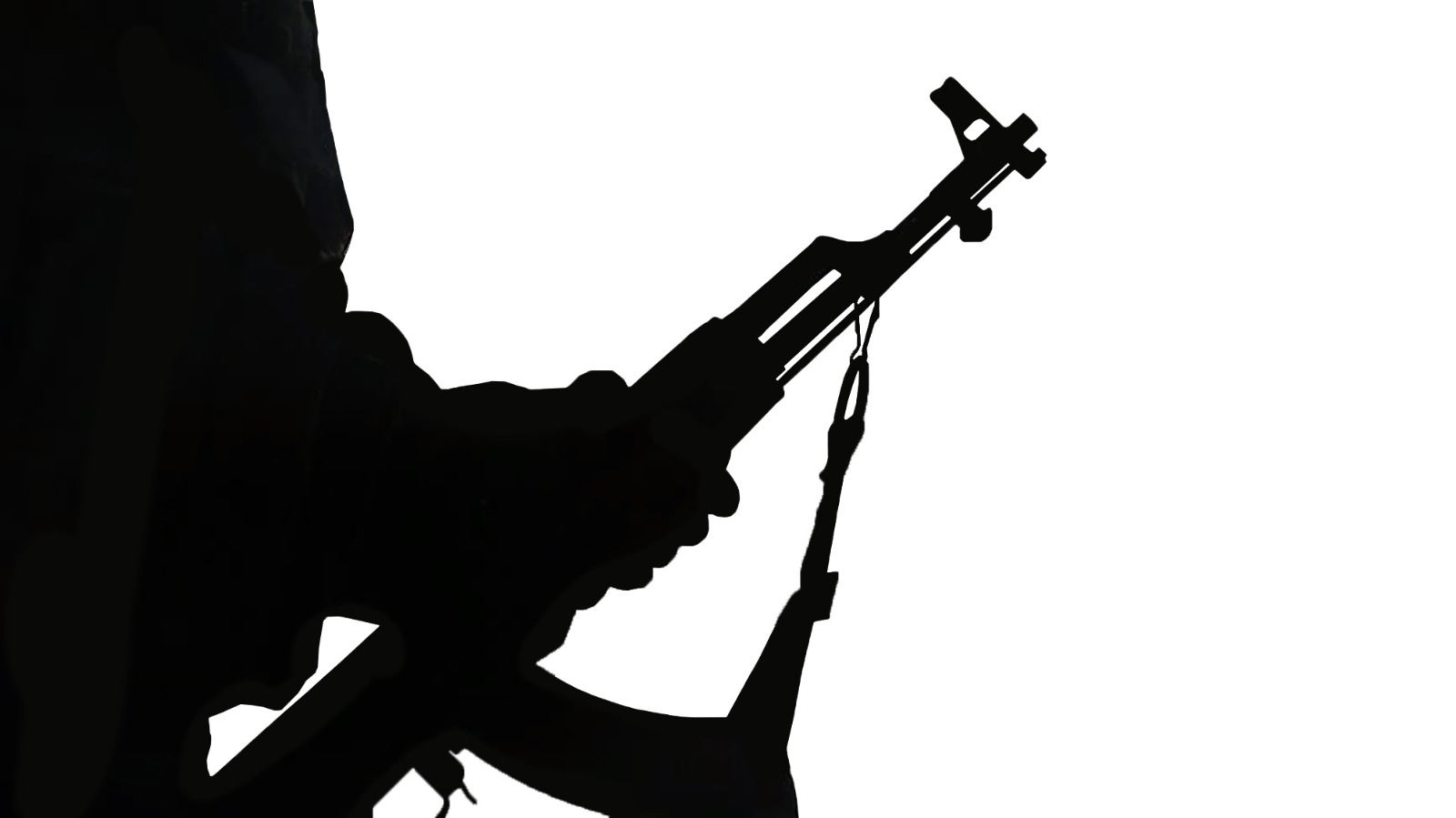ISKP; A Regional Threat
This year’s Ashura passed without any bloodshed, and there was no evidence of an attack by ISKP in Afghanistan. But has security been ensured in the country? Has ISKP been weakened in carrying out its terroristic attacks, or is it waiting for an opportunity to resume them?
In this article, we examine claims from Taliban authorities regarding the country’s security.
ISKP: Islamic State Khurasan Province
ISKP is a multi-national and radical Sunni extremist group that emerged in 2015, inspired by ISIS in Iraq and Syria. It commenced its activities in eastern Afghanistan.
The group’s objective, in line with ISIS, is to establish an Islamic caliphate in the region.Initially led by Pakistani Afridi militants, it later merged with radical elements from Afghanistan and Central Asian countries, initiating deadly attacks in Afghanistan and Pakistan.
The religiously radical influence in the tribal regions of Pakistan and the negligence of the Pakistani government towards extremist teachings in those areas laid the groundwork for the formation of this group.
The former Afghan government had also been accused by the Taliban of aiding ISKP.
The presence of fighters from Central Asian countries, especially Uzbeks and Tajiks, alongside the group’s activities in northern Afghanistan, has instilled fear in the future of this group among Central Asian nations. ISKP has transformed into a common enemy for Afghanistan and the region.
The end of a twenty-year war and the beginning of a new struggle
After the fall of the Republic, the war between the Republic forces and the Taliban came to an end. However, the country has not reached peace, and serious concerns about the presence and activities of terrorist groups in Afghanistan persist, affecting both Afghanistan’s security and the region.
Based on a UN report [UNAMA REPORT RECORDS HEAVY TOLL ON AFGHAN CIVILIANS BY IED ATTACKS], since the return of the Taliban in 2021, more than one thousand civilians – most of them victims of terrorist attacks – have lost their lives, and nearly three thousand others have been injured.
These statistics indicate an undeniable fact that Afghanistan has not yet reached peace, and terrorist attacks continue to victimize the people of the country.
Deadly Attacks After the Taliban’s Resurgence
The proponents of negotiations with the Taliban had cited the end of violence as the main reason for talks between the United States and the Taliban. However, with the fall of the Republic and the Taliban’s return, Afghanistan has entered a new phase of violence and security threats.
ISKP attacks have received the most media coverage. The following are some of the attacks we know of on the record:
- Attack on Kabul Airport, on 26 August 2021, casualties: 170 killed and over 160 injured;
- Attack on Shuhada Mosque in Kunduz, on 6 October 2021, casualties: over 50 killed and over 100 injured;
- Attack on Sardar Mohammad Dawood Khan Hospital, on 1 November 2021;
- Attack on Abdulrahim Shadid School, on 19 April 2022, casualties: 20 killed and 48 injured;
- Attack on Sufi shrine in Kabul, on 29 April 2022, casualties: 66 killed and 78 injured;
- Attack on the Sikh and Hindu place of worship (Gurdwara) in Kabul, on 18 June 2022;
- Attack on the Russian Embassy in Kabul, on 5 September 2022;
- Attack on the Kaj Educational Center, on 30 September 2022, casualties: 53 killed and 117 injured;
- Armed attack on the Pakistani Embassy in Kabul, on 2 December 2022;
- Attack on a hotel accommodating Chinese nationals, on 12 December 2022;
- Attack on the employees of the Ministry of Foreign Affairs, on 11 January 2023;
- Attack on Nisar Ahmad Ahmadi, Taliban deputy governor for Badakhshan, on 6 June 2023;
- Explosion during Nirsar Ahmad Ahmadi memoria in FaizAbad city of Badakhshan on 8 June 2023. 11 killed including a Taliban commander Safiullah Samim and over 30 injured;
There has been an ISIS attack every month since the Taliban returned to power in August 2021 through the 12 months of 2022. Most of these attacks have occurred in the provinces of Nangarhar, Kabul, Kunar, Takhar and Kundoz.
Anti-ISKP Operations
The Taliban announced that in the past solar year, they have conducted eighty military operations against ISKP. According to the statements of Taliban spokespersons, more than 100 ISKP members were killed, and over 100 others were arrested during these operations.
The Taliban has said among the killed ISKP members were also some commanders who were involved in many deadly attacks.
- Ejaz Ahmad Ahangar, Kashmir born ISKP commander killed in Afghanistan, February 2023
- Qari Fatih ISKP commander killed in Kabul, February 2023
- Mawlawi Ziaudding the second ISKP chief in Afghanistan, Abu Omar Afridi member of Khurasan consul and Salman Tajikistani IED maker and military trainer, killed in Balkh province.
- On June 9 Pakistani media reported that Sanaullah Ghafari – Shahabul Mahajr – the most wanted ISKP leader killed in Kunar province near the Pakistan border.
“The U.S. Department of State’s Rewards for Justice (RFJ) program, administered by the Diplomatic Security Service, is offering a reward of up to $10 million each for information leading to the identification or location of ISIS-K leader Sanaullah Ghafari, also known as Shahab al-Muhajir, and for information leading to the arrest or conviction in any country of those responsible for the August 26, 2021, terrorist attack at the Kabul airport.”
The Department of State added: “In June 2020, Sanaullah Ghafari was appointed by the ISIS core to lead ISIS-K. Ghafari is responsible for approving all ISIS-K operations throughout Afghanistan and arranging funding to conduct operations. On November 22, 2021, the Department of State designated Ghafari as a Specially Designated Global Terrorist under Executive Order (E.O.) 13224, as amended.”
On June 9, Pakistani media reported that Sanaullah Ghafari – famously also known as Shahabul Mahajr – the most wanted ISKP leader had been killed in Kunar province near the Pakistan border. Pakistan military sources leaked the news to Pakistani media but still there is no evidence and confirmation of the killing of ISKP leader in Afghanistan.
These events contradict the claims of Taliban authorities, especially the acting Foreign Minister of the Taliban, who says that ISIS does not exist in Afghanistan.
Armored Vehicles of Taliban Officials
Taliban officials have always claimed that security in Afghanistan is ensured, and no group can disrupt the security. However, these officials use armored vehicles in their travels.
After the fall of the Republic, thousands of armored vehicles belonging to foreign forces and Republic officials remained intact. Currently, all of these vehicles are being used by Taliban officials.
If the Taliban’s claim about ensuring security throughout Afghanistan is true, then why do Taliban officials use armored vehicles? The movements of Taliban officials with armored vehicles and armed guards indicate the fragility of security in Afghanistan and the vulnerability of Taliban officials to attacks – similar to the Taliban’s style of attack during the Republic period.
Why is ISKP a threat to the region?
Most of the leaders of ISKP have been Pakistani or have had connections with groups in Pakistan. This group emerged in eastern parts of Afghanistan in 2015 and later expanded its activities to other regions such as Zabul, Helmand, and the northern parts of the country.
ISKP has a regional strategy, focusing on the historical region of Khorasan, which includes several countries from Iran to Central Asia and Pakistan. Therefore, it named its branch in Afghanistan as “IS Wilayah Khorasan.”
When extremists, especially former members of the Pakistani Taliban, pledged allegiance to ISIS, Pakistan did not take significant measures to prevent ISIS activities or crackdown on the group, especially in areas where ISIS could recruit new members. This lax approach has had negative consequences for Pakistan as well.
According to a 2022 report by the Pakistan Institute for Peace Studies, one-fourth of terrorist attacks in Pakistan were organized and carried out by ISKP.
Later Pakistan’s military personnel carried out arrests of ISKP members in Pakistan, detaining some of them.
Central Asia is also vulnerable to this threat. After the Taliban’s resurgence, border regions of Afghanistan witnessed rocket attacks from Afghanistan to Uzbekistan, and ISKP has employed fighters from Uzbekistan and Tajikistan for its terrorist activities. Previously, fighters from the Islamic Movement of Uzbekistan had declared their allegiance to ISIS.
Armed Groups: Allies and Enemies
According to the United Nations Security Council: “Afghanistan remains the primary source of terrorist threat for Central and South Asia. It originates from groups including the Islamic State of Iraq and the Levant-Khorasan, Al-Qaida, Tehrik-e Taliban Pakistan, as well as ETIM/TIP, Islamic Movement of Uzbekistan, Islamic Jihad Group, Khatiba Imam al-Bukhari, Khatiba al-Tawhid wal-Jihad, Jamaat Ansarullah and others. These groups enjoy greater freedom of movement in Afghanistan owing to the absence of an effective Taliban security strategy.” (thirty-first report of the Analytical Support and Sanctions Monitoring Team)
According to the United Nations: “Regional Member States estimated current ISIL-K strength at between 1,000 and 3,000 fighters, of whom approximately 200 were of Central Asian origin, but other Member States believed that number could be as much as 6,000. Core ISIL-K cells are located primarily in the eastern Kunar, Nangarhar and Nuristan Provinces of Afghanistan, with a large cell active in Kabul and its environs. Smaller groups had been detected in the northern and north-eastern Badakhshan, Faryab, Jowzjan, Kunduz, Takhar and Balkh Provinces. Since Balkh is one of the most economically developed provinces in the north, it remained of primary interest to ISIL-K in terms of revenue generation.”
The National Resistance Front and the Freedom Front
These two fronts, mostly comprised of former Republic-era military personnel, have occasionally engaged in clashes with the Taliban fighters, but these confrontations are not conventional battles and involve hit-and-run tactics.
The National Resistance Front was initially based in Panjshir Valley, but the Taliban took control of this traditional resistance stronghold after intense and sustained battles.
Amnesty International has documented events in Panjshir and accused the Taliban of carrying out arbitrary detentions, torture, extrajudicial killings, and war crimes.
On the Andarab Front in Baghlan province, the Taliban continued their attacks until Commander Khair Mohammad Khairkha and his associates were killed. Both sides suffered heavy casualties in the battles of Panjshir and Andarab, but the National Resistance Front struggled to fill the gaps left by fallen soldiers and commanders, resulting in a noticeable reduction in hostilities in these two fronts. However, the Taliban has abundant resources to replenish its lost fighters.
The Freedom Front has also reported hit-and-run attacks on Taliban fighters, but the loss of its commanders – Akmal Amir, Basir Andarabi, and their associates – in Salang Valley (in April 2023) was the most significant blow to this front compared to the hit-and-run attacks.
Neither of these two fronts holds control over any specific area of the country and relies on a small number of soldiers for their limited attacks.
In the battles of these two fronts, only soldiers from both sides are the victims, and no significant harm comes to their leadership. The Taliban will not be tired of such confrontations. Therefore, these two fronts are not considered a significant threat to the Taliban, unless they manage to capture certain areas of Afghanistan and engage in large-scale battles with increased forces. In such a case, they may temporarily pose a challenge to the Taliban. However, due to the Taliban’s military equipment and the surplus of their forces, these resistance groups would not pose a major headache for the Taliban in the short term.
The Regional and Global Options Between the Taliban and the National Resistance Front
Based on verified information, the National Resistance Front has at least two offices in the cities of Dushanbe, Tajikistan, and Mashhad, Iran, but no country has officially supported the National Resistance Front.
Representatives of regional and global entities are engaged in dialogue with members of this front, but at the same time, these entities and countries are seeking conditional engagement with the Taliban.
Respect for human rights, especially women’s rights, the formation of an inclusive government in Afghanistan, the fight against terrorism, and ensuring non-interference in the affairs of neighboring and other countries are prerequisites for this engagement.
The United States has repeatedly stated that it does not support any armed group in Afghanistan.
Iran and India, traditional allies of the National Resistance Front, also maintain close relations with the Taliban, and their diplomats are present in Kabul.
Central Asia countries, which are seeking trade relations with Pakistan and using the country’s ports through Afghanistan, see benefits in engaging with the Taliban.
On the other hand, Central Asia countries are vulnerable to the increase in ISKP activities in northern Afghanistan, especially the presence of Tajik and Uzbek citizens in the ranks of ISKP, some of whom are either being pursued in their own countries or who have fled from their countries and joined this group.
Regional countries understand how serious and dangerous the ISIS threat is. Hence, they do not want to jeopardize their interests by supporting the National Resistance Front and also do not want to open the field for ISKP by engaging the Taliban in battles with the National Resistance Front.
Based on the report of the United Nations Security Council: “The ISIL-K magazine “Voice of Khorasan” releases propaganda in Pashto, Persian, Tajik, Uzbek and Russian languages; recent outreach in Tajik and Uzbek was noteworthy following a man named Rashidov, an Uzbekistan national, joining the ISIL-K media wing. With the goal of recruiting from ethnic groups in the region and strengthening the group’s capabilities, ISIL-K had recruited Rashidov online while he was working in Finland as a labor migrant, before moving to Afghanistan.”
Taliban operations against ISIS will bring these countries closer to the Taliban, not the National Resistance Front.
Conclusion
Abdul Salam Zaeef, the Taliban ambassador in Islamabad, said during the first term of the Taliban, in an interview with Tolo News, that in his view, “The United States does not want the Taliban to be overthrown and has no alternative to the Taliban.”
This statement may be interpreted as biased, but in a situation where all the institutions of the Republic had collapsed, and the Taliban had control over all parts of the country, it also reflects the reality.
Taliban’s policies against human rights, especially women’s rights, have been widely criticized, but the Taliban knows that Afghanistan’s neighbors and the world are concerned about the expansion of ISKP activities and have no other viable leadership choice in the short term, so they continue their hardline policies and do not yield to international demands.
The presence of foreign fighters and extremists, especially fighters from Central Asia countries, has raised concerns among Afghanistan’s northern neighbors.
This concern has been repeatedly expressed by Central Asian and Russian officials.
The question arises as to whether regional foreign fighters see their future in Afghanistan or whether they are planning to use Afghanistan as a base to attack their own countries, based on the Islamic Caliphate ideology prevalent in all Islamic countries.
شبکه افغانستان اینترنشنال از گفتههای مولوی عبدالحمید امام اهل سنت ایران که گفته است مدیران بانک مرکزی ایران از مدیران بانک مرکزی افغانستان مشوره بگیرند، خبری ساخته است. این روحانی اهل سنت ایران روز جمعه [...]
In the past two weeks, the Taliban have detained at least nine journalists and media personnel. The United Nations Assistance Mission in Afghanistan (UNAMA) has stated that the Taliban have arrested these journalists from six [...]
This year's Ashura passed without any bloodshed, and there was no evidence of an attack by ISKP in Afghanistan. But has security been ensured in the country? Has ISKP been weakened in carrying out its [...]



